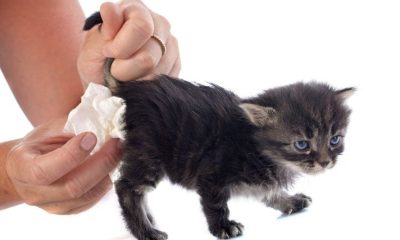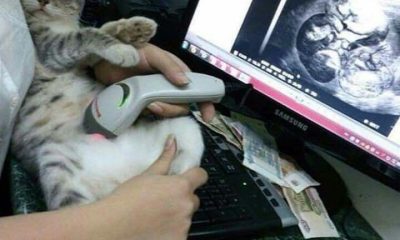Horses
Don’t Go Horse Shopping Without Checking This Dressage Horse Shopping Checklist First!
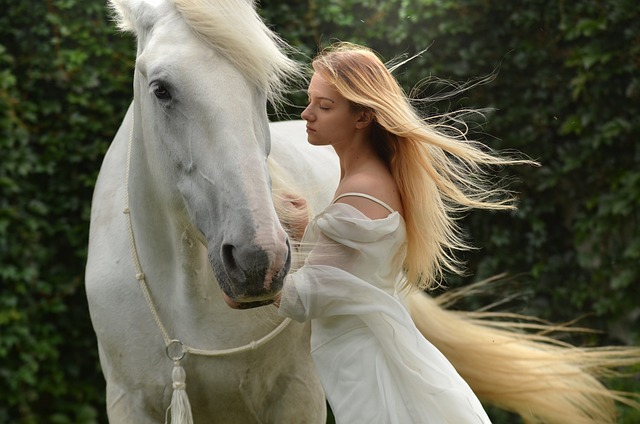
You’ve just been invited to purchase your very first dressage horse, but you’re not sure where to begin! You have no idea which questions to ask, what skills you should look for, or what you’ll need to do once you get the horse home and into your barn. To help ease some of your worries and make the process go more smoothly, consider using this handy dressage horse shopping checklist before making your final decision on the perfect horse!
Question 1: Who is the ideal owner of this horse?
There are a lot of people who should not own dressage horses. If you are looking to buy one, take some time to figure out if you’re in good shape to have one. They do require a very specific owner and will only thrive in a certain type of environment. Do your homework, be honest with yourself, and find out what kind of horse would suit you best before going shopping for one. A dresser can still be good for an amateur rider or even a rider just starting on cross-country courses, but they are not all-around horses or first-choice horses when it comes to showing and jumping. There is an old saying dressage makes champions and it’s true, but if you don’t want to do dressage then perhaps try something else.
Question 2: Is it reliable, trustworthy, and safe to be around other horses?
Unfortunately, some people are dishonest when buying and selling horses. The word to watch out for here is broke. This means different things to different people, but in general, it’s easy to spot an untrustworthy person if you know what questions to ask. A horse that has been around other horses should be able to have its feet picked up or shod without a problem. Some experts even think that a horse shouldn’t have trouble standing in a crosstie by itself, especially with nothing attached. If something doesn’t look right about your potential mount, move on – there are plenty of other horses available. Horses that haven’t been handled by others tend to be spooky and much harder to control on their own.
Question 3: How much is it costing to keep him?
Horses require a lot of hay and grain. I try to keep my feed costs down by growing as much of my feed as I can. You might have that same opportunity, but it might mean getting your hands dirty or stepping out of your comfort zone to do so. Before you buy any horse make sure you know how much you’ll need to spend on his upkeep each month. It could be anywhere from $200-800, depending on where you live, what kind of care he needs, and if he’s old or young.
Question 4: Are there any significant health issues I need to know about before buying him?
If there is any health question, it’s crucial to find out before buying. You don’t want to find out you bought a horse with weak knees or a bad back after you already signed a contract and spent hundreds, if not thousands of dollars on vet care. A great place to start looking for answers is at Equine Disease Quarterly (EDQ), which offers information from both reputable organizations and individual veterinarians. If you have questions about specific conditions or your horse’s breed, talk to a breeder in that breed association; often they can connect you with other breeders who have been through similar situations.
Question 5: What will it cost me to make any necessary improvements?
You don’t want to buy a horse with expensive hidden costs. If you have any special requirements, know what it will cost to meet them. Do you need to get another horse stall built? Is there a certain saddle your horse requires? Do you need to build a specific type of fencing for your new horse? Will there be any additional licensing fees needed for your new equine companion? The best way to discover hidden costs is to ask around and do some research on Google, but always make sure that if you ask about possible improvements, it’s within reason. You don’t want any potential sellers trying to squeeze more money out of you just because they feel like they can.
Question 6: What level of management do I need (and am prepared) to provide daily?
Full-time riders and/or grooms are generally expected to work five to six days per week, although how many hours they ride or groom on any given day will depend on their ability. Show riders may only have one riding lesson per day, while dressage and show jumping horses may have up to three lessons per day. These activities usually fall into three broad categories: conditioning; training; and showing, though each discipline will vary in terms of what conditioning means. In most cases, conditioning is considered anything that is not training or showing, which can include footing and pasture maintenance.
Most people who work with horses have some sort of background knowledge about these basic duties, but you should discuss your expectations before making an offer so there’s no confusion later on. It’s also important to consider your schedule when hiring a horse manager or worker. If you plan to be away for long periods during certain times of the year (e.g., summer break), make sure you find someone who can commit to working those days as well.
Question 7: Do I have appropriate facilities for this horse?
If you live in an apartment, you can’t keep a horse. If your property isn’t fenced and has no pasture, you can’t keep a horse. (Even if they say they’ll turn out 24/7, that doesn’t mean they will.) Even if you live on multiple acres of pristine grassland with a gorgeous barn and heated tack room, there are plenty of other considerations to take into account when deciding whether or not to buy: does your property drain well? Is it safe for your child and family’s pets? Will your fence hold up against winds and/or flooding from natural disasters like snowstorms or hurricanes? And what about theft—are there any break-ins in your area? You don’t want to be that guy who bought a $40,000 horse only to have it stolen off his property within weeks of purchase. Do yourself a favor and make sure you can properly house your horse before you even start looking at horses.
Question 8: Am I buying from a reputable source?
Although some sellers may be quite reputable, always ask for proof of ownership and breeding records before purchase. The National Reined Cow Horse Association offers many tips on how to buy a well-bred reined cow horse, including what questions you should ask and what paperwork you should expect to see when shopping. Remember that a good horse is an investment; invest wisely by being smart about your purchases and knowing what to look for. Don’t forget: you get what you pay for in most cases, so if something seems too good to be true it probably is.
Question 9: How long do I want this horse and why?
It may be a good idea to list your goals, but even if you don’t have long-term goals, you should think about why you are shopping for a horse right now. Are you looking for a riding partner or some additional family fun? Do you want to take lessons or compete in dressage? Keep in mind that horses can live between twenty and thirty years, so you will want to consider your plans when deciding how much money to spend on your first equine companion. If dressing is not one of your interests, it might be better to invest in a younger horse than an older one that is beyond its prime and no longer able to participate in youth programs and lessons.
Question 10: Does he fit into my overall program plan?
Horses come in many different sizes, shapes, and breeds. When shopping for your ideal dressage horse, it’s important to select one that fits well into your program plan. You must consider whether or not your potential new addition will fit in with all of your other horses. If he’s too strong, he could hurt a weaker horse; if he’s too nervous, a calm horse might be spooked by him; if he doesn’t fit well into his stall, you might have problems with other horses trying to get at him. The list goes on. Make sure your potential new horse is compatible with your current stablemates before buying him.
Read Also :
10 Important Considerations You Must Know Before Owning a Horse!
Feeding and Breeding Horses: The Do’s and Don’ts
Horses
How to Estimate Monthly Horse Training Costs on Your Own
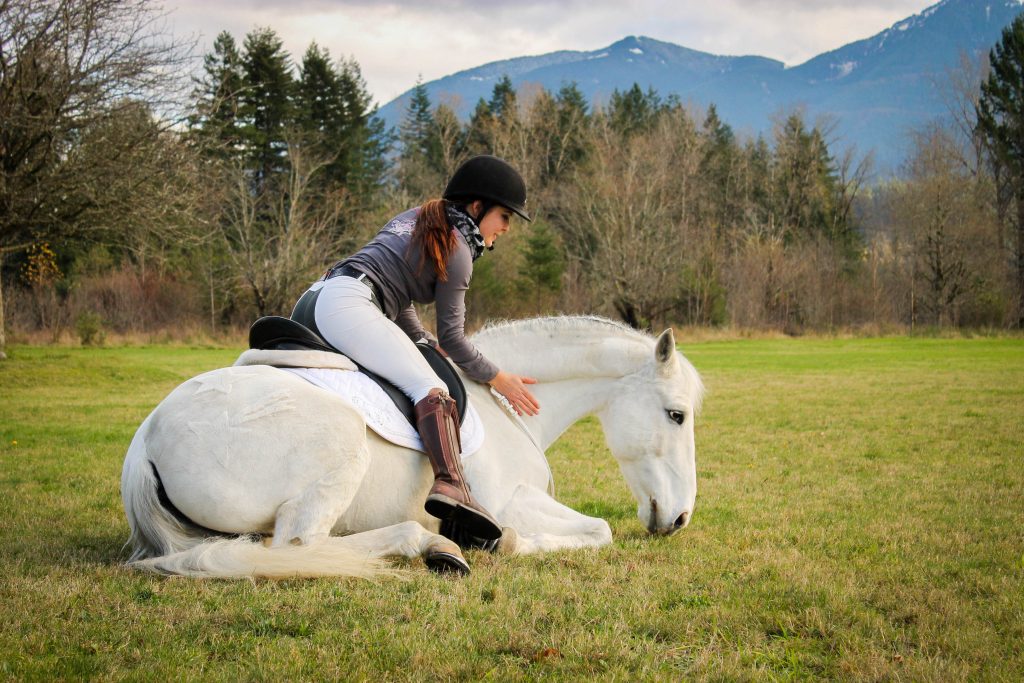
When you are considering horse training for your beloved steed, one of the most important aspects to consider is the cost. Whether working with a professional horse trainer or teaching your horse yourself, estimating the monthly costs associated with horse training is important. This blog post will help you to better understand how to accurately estimate the monthly costs of horse training so you can make an informed decision about the best option for you and your horse.
Horses
Beginner’s Guide to Understanding Common Horse Terms

Are you new to the world of horses and feeling overwhelmed by the seemingly endless list of horse terms? Don’t worry! This beginner’s guide will help you understand the most common horse terms so you can start conversing with experienced horse owners with confidence. From body parts to colors to gaits, this guide will explain the basics of horse terms so you can better understand this amazing animal.
Mare: a female horse over the age of four
When it comes to horse terminology, one of the first words you should know is “mare.” A mare is a female horse that is at least four years old. Mares are commonly used for riding, racing, and breeding. They are known for their gentle and nurturing nature, making them a popular choice for those who are new to horse riding or training.
Mares go through a natural reproductive cycle, which is why they are commonly used for breeding purposes. They are angry foals for approximately 11 months, after which they give birth to a beautiful baby horse. Many mares are also used for horse shows, as they are elegant and graceful in the arena.
It’s important to note that not all mares are suitable for riding or breeding. Some mares can be quite temperamental and may require a skilled and experienced trainer to handle them. In general, however, mares are gentle and loving animals that can form a strong bond with their owners and riders.
If you are looking to get involved in horse riding or horse breeding, understanding the term “mare” is essential. Knowing the different terms associated with horses can help you communicate more effectively with other horse enthusiasts and experts in the field.
Colt: a male horse under the age of four
If you’re new to the world of horses, the term “colt” might be confusing. But don’t worry, we’re here to clear it up for you. A colt is simply a male horse under the age of four. Once a male horse reaches the age of four, he is then referred to as a stallion if he’s used for breeding, or a gelding if he’s been castrated.
Colts are usually born in the spring or summer and are weaned from their mothers between four and six months of age. At this point, they’ll be separated from their dams and placed in a pasture with other young horses. They’ll spend the next few years growing and learning, and will eventually be trained for riding or driving.
It’s important to note that while colts may be playful and curious, they can also be dangerous if they’re not handled correctly. If you’re new to horses, it’s best to leave handling young colts to experienced professionals. In addition, it’s important to keep colts separated from mares unless they’re being bred intentionally. Male horses can be aggressive and territorial, especially around mares, so it’s important to exercise caution.
Now that you understand what a colt is, you can impress your horsey friends with your knowledge. And who knows, maybe someday you’ll even own a colt of your own!
Stallion: a male horse used for breeding
Stallions are male horses that are kept for breeding purposes. They are highly prized in the horse world for their ability to produce offspring with desirable traits such as speed, strength, and agility. However, owning and breeding a stallion requires a lot of knowledge and experience, as these horses can be quite difficult to handle.
Stallions are known for their aggressive behavior, which can be a result of their instincts to protect their mares and offspring. They may also exhibit territorial behavior, which can be dangerous for both humans and other horses. As such, it is important to always exercise caution when handling a stallion and to seek the advice of experienced trainers and handlers when working with them.
In addition to their behavior, stallions are also recognized by their physical characteristics. They tend to have a more muscular build than mares or geldings and may have a thicker neck and stronger jaw. They may also have a more prominent mane and tail, which is often styled for show.
Breeding a stallion requires careful consideration, as the stallion’s genetic traits will be passed down to its offspring. As such, it is important to choose a stallion with desirable traits, such as good conformation, soundness, and a proven record of producing successful offspring. This is typically done through research, and by seeking the advice of veterinarians and other horse professionals.
Overall, stallions are a valuable asset in the horse world but require a lot of knowledge and experience to handle properly. If you are considering owning or breeding a stallion, it is important to do your research and seek the advice of experienced professionals to ensure that you make informed decisions and provide the best possible care for your horse.
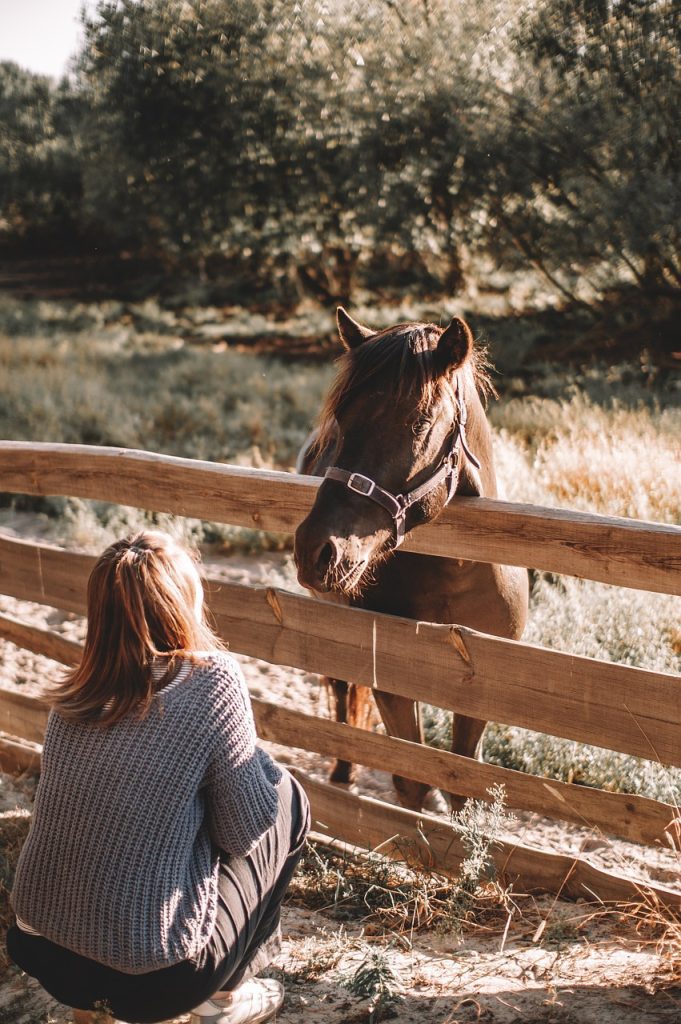
Gelding: a castrated male horse
A gelding is a male horse that has been castrated. This means that their testicles have been removed, making them incapable of breeding. Geldings are popular in the horse world for a variety of reasons, including their even temperaments and trainability.
Geldings tend to have more consistent and predictable behavior than stallions, as they don’t experience the hormonal surges that can cause stallions to become aggressive or unpredictable. They also tend to be easier to train and handle than stallions, which is why many riders and trainers prefer working with them.
Geldings come in all shapes and sizes, just like any other horse. They can be used for a wide range of activities, from trail riding to show jumping. Because they tend to be easier to manage than stallions, many riding schools and equestrian centers will use geldings for lessons and other activities.
While gelding a horse may seem extreme, it’s a relatively common procedure that is often done for the safety and well-being of the horse and those around them. It can also help reduce unwanted behavior in male horses, making them more suitable for certain activities and environments.
Overall, geldings are an important part of the horse world, and understanding what they are and what they can do is an important part of being a horse owner or rider.
Filly: a female horse under the age of four
When it comes to horses, it’s important to understand the different terms used to describe them, especially if you’re new to the equine world. One such term is “filly,” which refers to a female horse that is under the age of four.
Filly’s are young female horses that are full of energy and curiosity. They’re usually very playful and love to run and play. They have yet to reach maturity, and they’re still developing both physically and mentally. At this age, they require plenty of attention and care to help them grow up to be healthy and happy horses.
Filly’s are often trained and worked with from a young age. It’s important to start their training slowly and carefully, focusing on building trust and a good foundation for their future development. As they grow and mature, they can be trained for a variety of disciplines, from racing to dressage and more.
One thing to keep in mind when working with filly’s is that they can be a bit temperamental at times. This is natural for young horses, but it’s important to be patient and consistent in your training to help them become well-behaved and obedient horses.
Overall, filly’s are an exciting part of the equine world. Whether you’re looking to train them for a specific discipline or simply enjoy their playful nature, these young female horses are sure to capture your heart. So if you’re just getting started with horses, familiarize yourself with the term “filly” and prepare for an exciting journey!
Foal: a baby horse of either gender
One of the most adorable and endearing sights in the world of horses is a foal, a baby horse. Whether you’re an experienced horse enthusiast or just beginning to learn about these magnificent creatures, it’s important to understand what a foal is and how it fits into the equine world.
A foal refers to a horse that is still in its infancy, typically under the age of one year old. This term can be applied to both male and female horses. Foals are the product of the breeding process and are born after a gestation period of around 11 months. Watching a foal take its first steps and interact with its mother is truly a heartwarming experience.
As foals grow, they go through various stages of development. In the first few days of their lives, they rely entirely on their mother’s milk for nutrition. Foals must receive adequate colostrum, the first milk produced by the mare, which contains essential antibodies for their immune system.
As they grow older, foals start to eat solid food alongside their mother’s milk. This transition period, usually around two to four months old, is known as weaning. It’s a significant milestone for both the foal and the mare as they adjust to a new routine and the foal becomes more independent.
Foals have a playful and curious nature, spending much of their time frolicking in pastures, exploring their surroundings, and engaging in social interactions with other foals. These activities are crucial for their physical and mental development, as they learn important skills and establish social hierarchies.
During this period, foals need to receive proper care and attention from their owners or caretakers. Regular veterinary check-ups, deworming, and vaccinations are necessary to ensure their health and well-being. Additionally, providing a safe and secure environment, along with appropriate nutrition, is essential for their growth and development.
As foals approach their first birthday, they lose their « baby » appearance and resemble adult horses more closely. This transition, known as the yearling stage, marks the end of their foalhood and the beginning of their journey into adulthood.
Pony: a small horse
Ponies are smaller breeds of horses, typically measuring 14.2 hands (58 inches) or less at the withers (the highest point of the horse’s back). They are often mistaken for young horses, but they are fully mature adults.
Ponies are known for their strength, agility, and surefootedness, making them well-suited for various activities, such as driving, riding, and pulling. They are also popular for children and smaller riders due to their smaller size.
There are various types of ponies, each with unique characteristics and uses. Some popular pony breeds include Shetland, Welsh, and Connemara.
Despite their size, ponies require the same amount of care and attention as their larger equine counterparts. This includes regular exercise, feeding, grooming, and veterinary care. It’s important to research the specific needs of your pony breed to ensure they stay healthy and happy.
Read Also :
Feeding and Breeding Horses: The Do’s and Don’ts
10 Important Considerations You Must Know Before Owning a Horse!
Horses
The Moral Conundrum of Eating Horses!
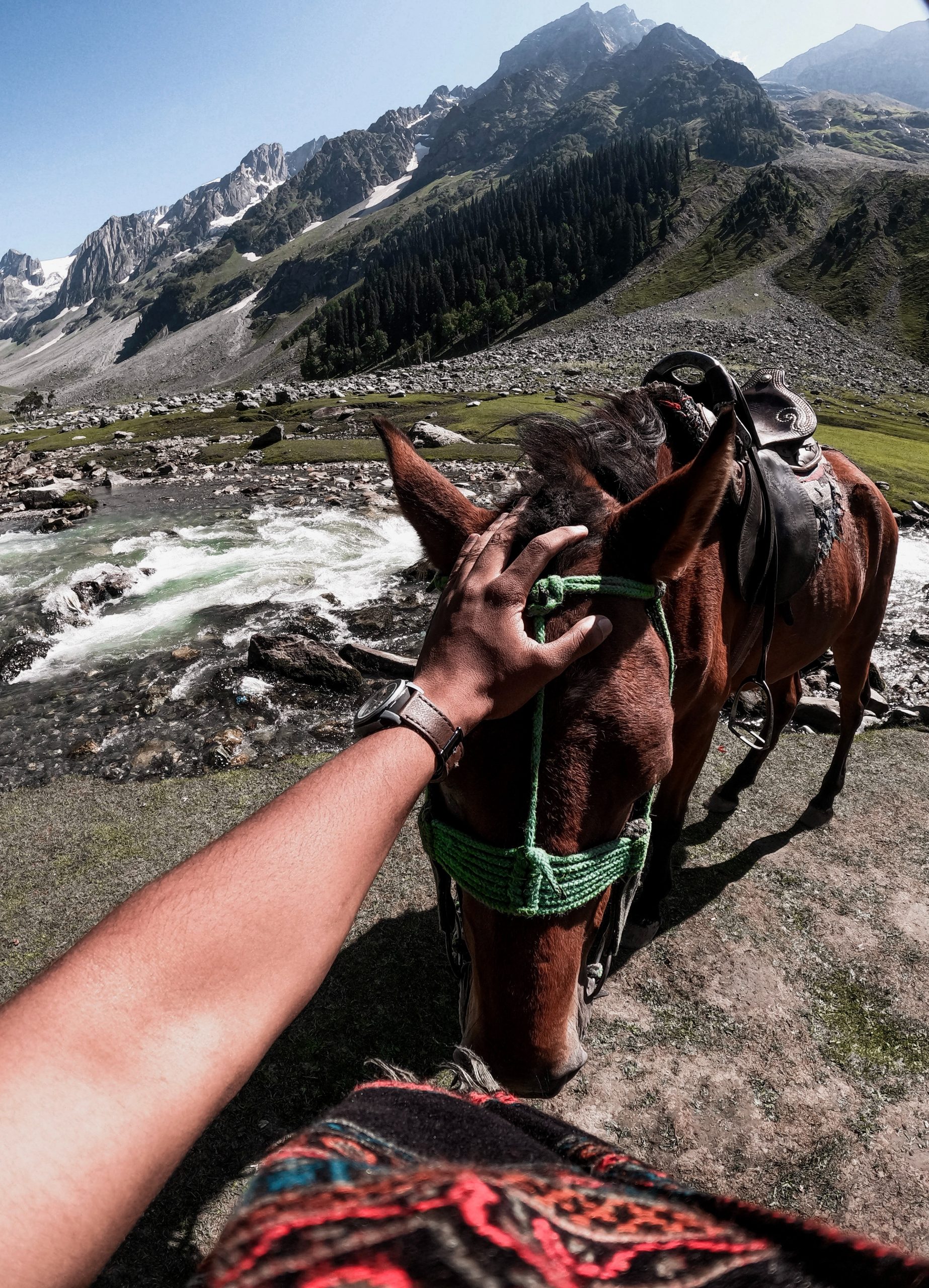
Horses are currently banned from human consumption in the United States, but this hasn’t always been the case. Before being made illegal in 2006, up to 100,000 horses were slaughtered every year in the US alone. This prompted an ethical debate regarding whether horses should be allowed as food or not, and many believed that horses should not be consumed by humans due to their intelligence and capacity to experience fear and pain. However, other arguments have been made that dispute this idea and say that horses can just as well be killed for human consumption as cows or chickens are. So what do you think about eating horses?
Is eating horses, right?
There’s been a long-standing debate about whether or not horses should be eaten. Horse meat is still eaten in other countries such as France, Belgium, and Italy. But for whatever reason, horse consumption has never really caught on in North America. The idea of eating horses is often met with disgust and fear. After all, many people treat their horses like family members.
But what if the only alternative to eating a horse was starving? If it would take more food to keep the animal alive than it would feed an average human being – then it might make sense to eat the horse. In this case, you might consider it justifiable to kill and eat a horse to avoid starvation. But what if there wasn’t an alternative?
What are the arguments in favor of horse consumption?
Horses are domesticated animals and as such, they have adapted to living in our world. They have grown accustomed to humans and the ways that we live. The people who care for them have likely become their friends, feed them treats, and give them affection. If a horse is treated well throughout its life, then it seems logical that it would not mind being killed to provide us with food.
If a horse is treated well throughout its life, then it seems logical that it would not mind being killed to provide us with food. There’s also the argument that because horses evolved alongside humans, their meat could be the most natural option for human consumption out there.
What are the arguments against horse consumption?
Some would argue that eating horses is morally wrong because it is unnecessary. The horse population in the U.S. has been dwindling for years and most horse owners are reporting a surplus of horses, so why take away what little food they have? Furthermore, there is no reason to eat horses when we produce enough beef and chicken to feed the entire country, not to mention the billions of other animal sources around the world that could be used as food. Horse meat also poses an increased risk of developing certain diseases such as Mad Cow Disease or Encephalitis.
Some would argue that eating horses is morally wrong because it disrespects their role in society as companion animals.
Conclusion
Today, horse consumption is a controversial topic. Those in favor argue that horses are a renewable resource and they have not been overpopulated like other animals like cows or pigs. However, opponents argue that eating horses is immoral and creates an unsustainable population of hungry humans and hungry horses. We may never come to a consensus on the ethics of eating horses, but one thing is for sure: you should at least know what you’re getting into before deciding on something as serious as this.
Read Also :
Feeding and Breeding Horses: The Do’s and Don’ts
10 Important Considerations You Must Know Before Owning a Horse!
Trending

 Cats1 year ago
Cats1 year agoDon’t Feed Your Cat These 8 Foods!

 Cats11 months ago
Cats11 months agoWhy Do Cats Spray and How Can You Stop Them? Insights into Urine Spraying in Male Cats

 Cats10 months ago
Cats10 months agoThe Ins and Outs of Cat Sterilization: Removing the Female’s Ovaries

 Cats10 months ago
Cats10 months agoPre-Vaccination Prep: Getting Your Cat Ready

 Cats9 months ago
Cats9 months agoWhy Kittens are Born Dead or Deformed

 Dogs2 years ago
Dogs2 years agoSo You’re Thinking About Getting a Poodle

 Dogs10 months ago
Dogs10 months agoWhat to Do With Your Dog’s Body After Death: A Guide for Pet Owners

 Cats9 months ago
Cats9 months agoSigns of Cat Pregnancy Week by Week




